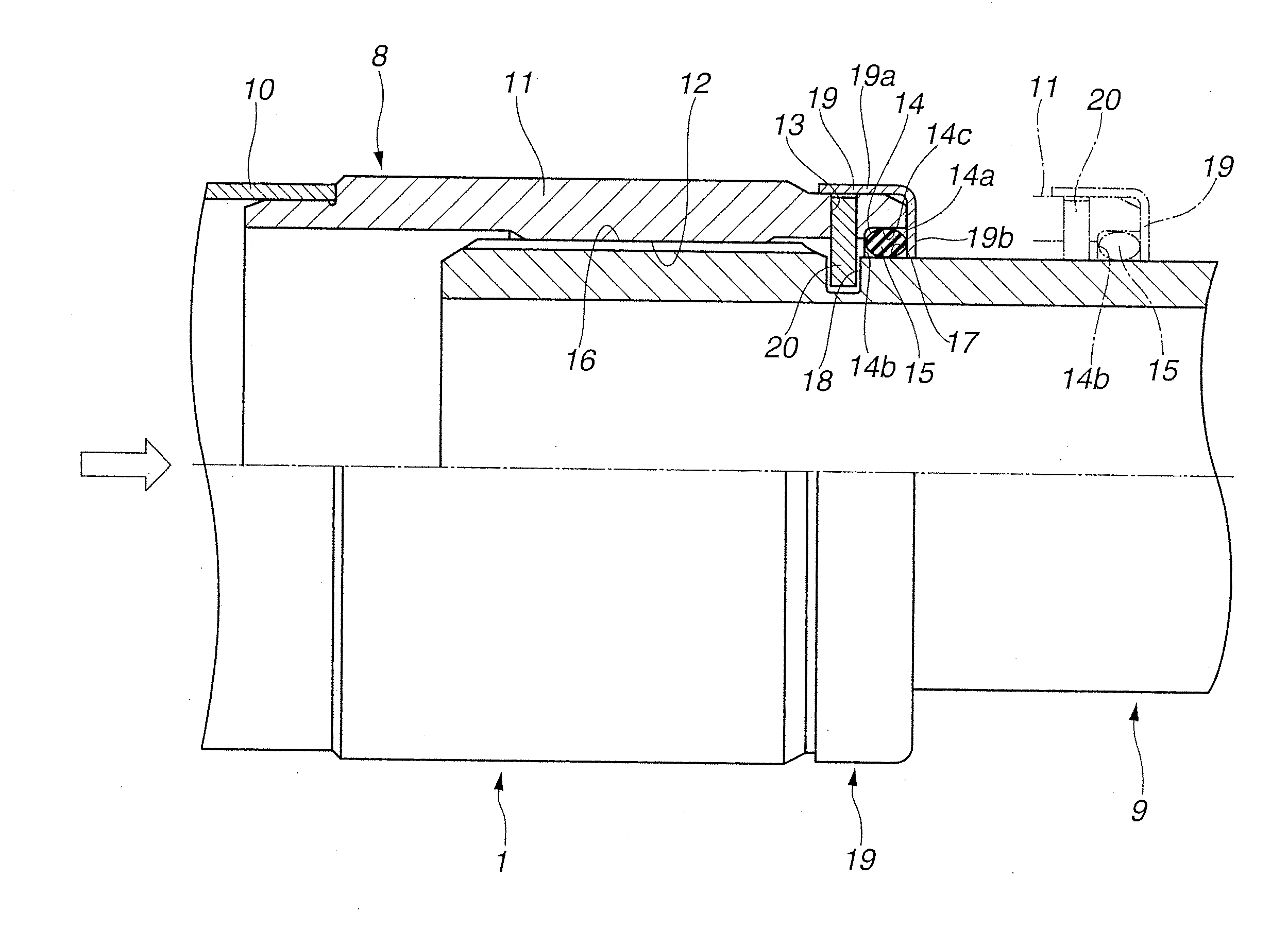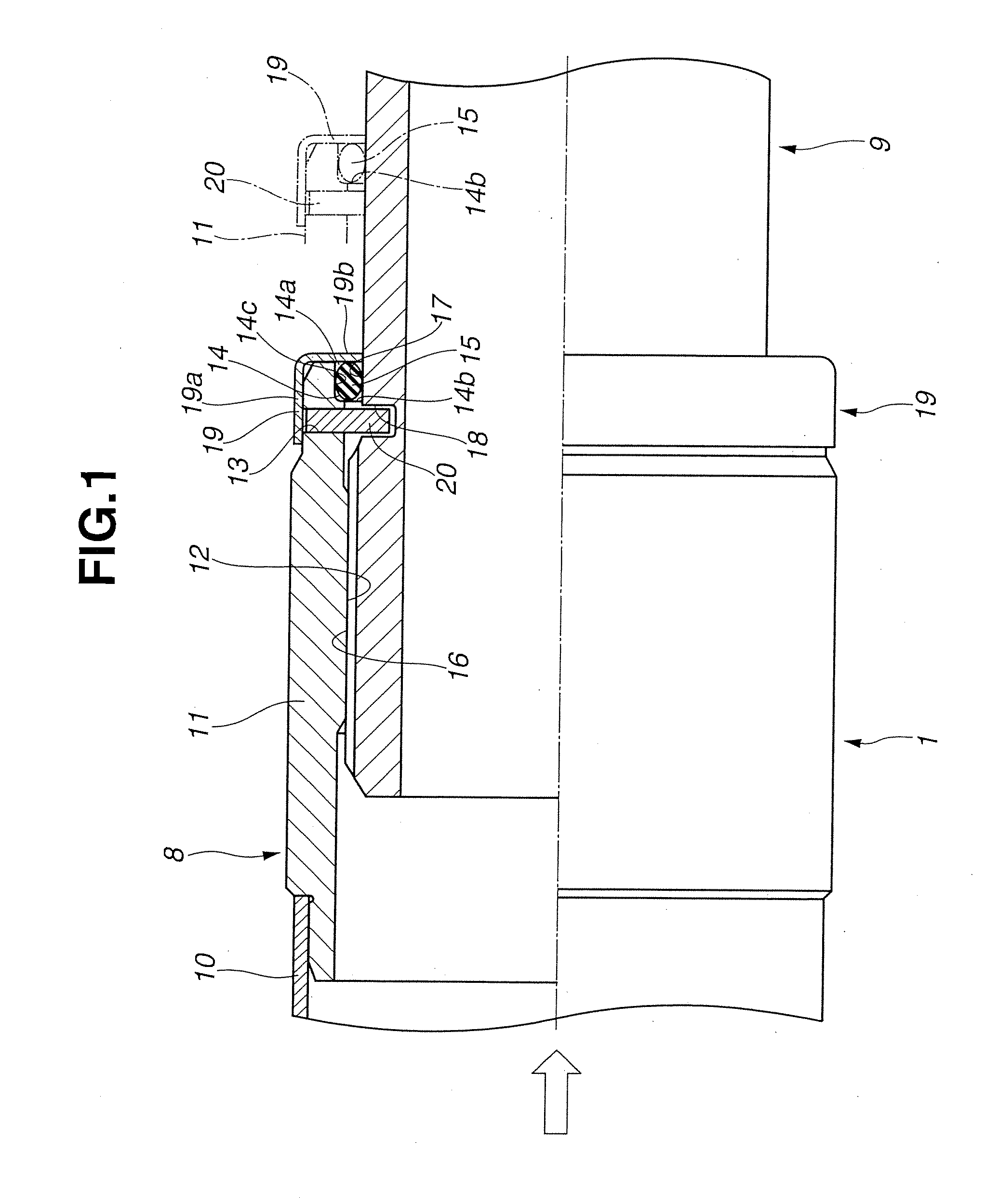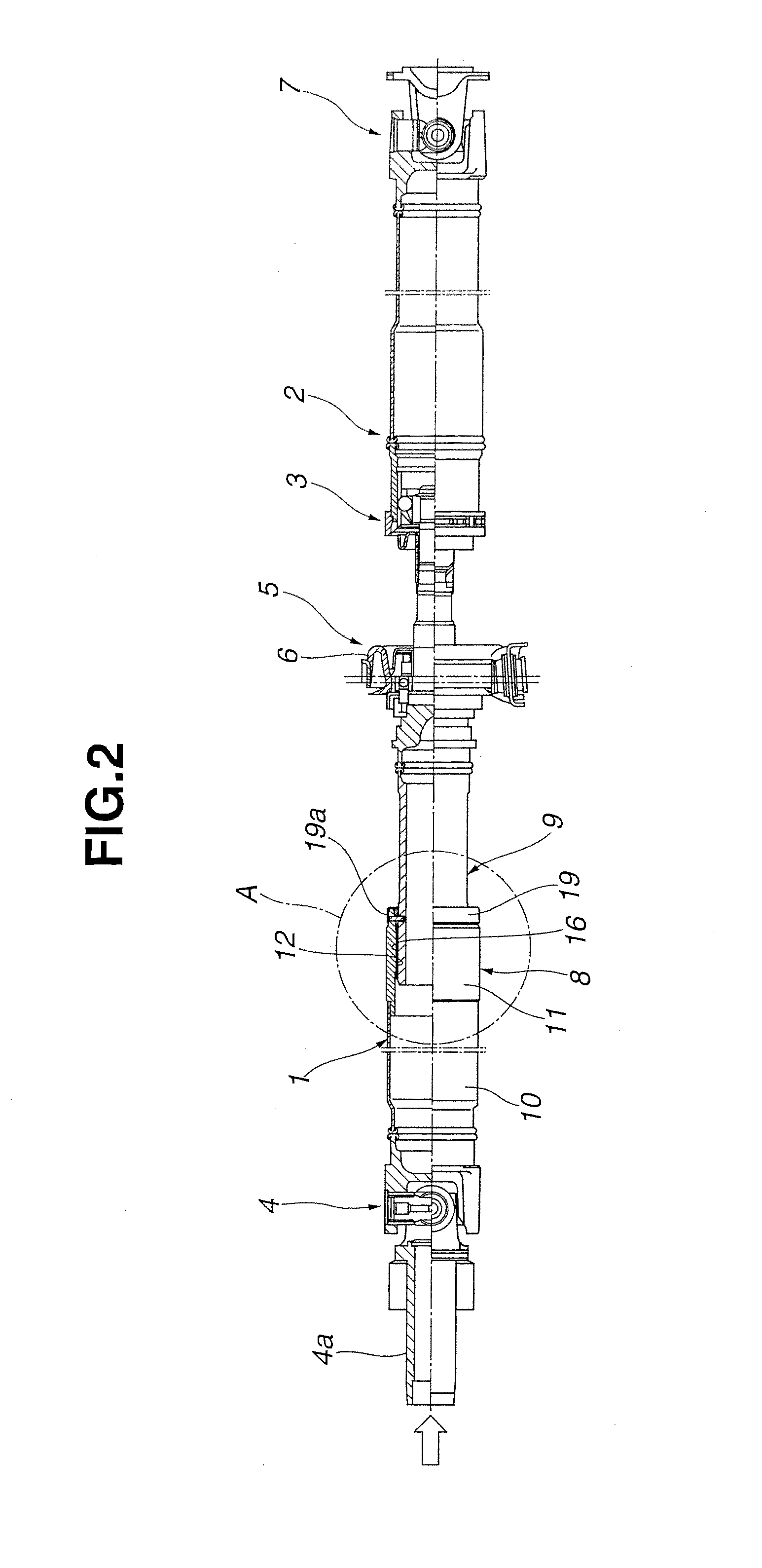Power transmission shaft and propeller shaft for vehicle
a technology of power transmission shaft and propeller shaft, which is applied in the direction of sealing, couplings, transportation and packaging, etc., can solve the problems of deteriorating shock absorption performance, affecting the smooth movement of cylindrical members relative to shaft members, and affecting the stability of the shaft, so as to achieve the effect of suppressing the lowering of shock absorption performan
- Summary
- Abstract
- Description
- Claims
- Application Information
AI Technical Summary
Benefits of technology
Problems solved by technology
Method used
Image
Examples
second embodiment
[0042]FIG. 3 shows a second embodiment of the present invention. A basic structure of the second embodiment is the same as the first embodiment. However, as a different structure, a non-seal surface 21 that is a small diameter portion having a smaller diameter than an outer diameter of the outer peripheral seal surface 17 is formed on the outer peripheral surface of the rear side shaft 9.
[0043]That is, the non-seal surface 21 is formed into a cylindrical shape having the smaller diameter than the outer diameter of the outer peripheral seal surface 17, and continues from one end edge position in the axial direction of the outer peripheral surface 17 to an almost all area “a” of the rear side shaft 9.
[0044]Therefore, as described above, when the excessive input-load is exerted on the front side shaft 8 of the first shaft 1 from an axial direction left side shown by an arrow in FIG. 3, for example, upon the collision of the vehicle, the large moving force to the direction of the rear s...
third embodiment
[0052]FIG. 5 shows a third embodiment of the present invention. A basic structure of the third embodiment is the same as the second embodiment. However, each of the engaging holes, the retaining pin and the retainer are not provided. Further, as the seal member, an oil seal 22 is used instead of the seal ring (o-shaped ring).
[0053]The oil seal 22 has a typical structure having a substantially bracket-shape in a cross section. The oil seal 22 has a circular base portion 22a which is press-fixed to the bottom surface 14c of the annular seal groove 14, a support portion 22b which is integrally formed with the base portion 22a and contacts the inside wall surface 14b and a seal portion 22c which is integrally formed with an inner peripheral side of the support portion 22b and contacts the outer peripheral seal surface 17 of the rear side shaft 9. The seal portion 22c is set so as to elastically contact the outer peripheral seal surface 17 all the time by a spring force of a backup sprin...
fourth embodiment
[0056]FIG. 6 shows a fourth embodiment. A basic structure of the fourth embodiment is the same as the second embodiment. However, in the fourth embodiment, a retaining pin 23 is provided at a front end portion 11a of the second tube 11 and a front end portion 9a of the rear side shaft 9.
[0057]That is, the retaining pin 23 is formed into a hollow cylindrical shape and a length of the retaining pin 23 is slightly smaller than an outer diameter of the front end portion 11a of the second tube 11.
[0058]The front end portion 11a of the second tube 11 has a large diameter and is formed to be thick. A first engaging hole 24 penetrates the front end portion 11a along a radially inward direction of the front end portion 11a. An inner diameter of the first engaging hole 24 is formed to be slightly larger than an outer diameter of the retaining pin 23 so that the retaining pin 23 is slightly press-fixed to the first engaging hole 24.
[0059]On the other hand, the inside of the rear side shaft 9 i...
PUM
 Login to View More
Login to View More Abstract
Description
Claims
Application Information
 Login to View More
Login to View More - R&D
- Intellectual Property
- Life Sciences
- Materials
- Tech Scout
- Unparalleled Data Quality
- Higher Quality Content
- 60% Fewer Hallucinations
Browse by: Latest US Patents, China's latest patents, Technical Efficacy Thesaurus, Application Domain, Technology Topic, Popular Technical Reports.
© 2025 PatSnap. All rights reserved.Legal|Privacy policy|Modern Slavery Act Transparency Statement|Sitemap|About US| Contact US: help@patsnap.com



